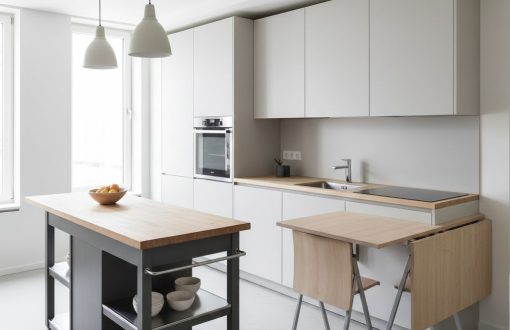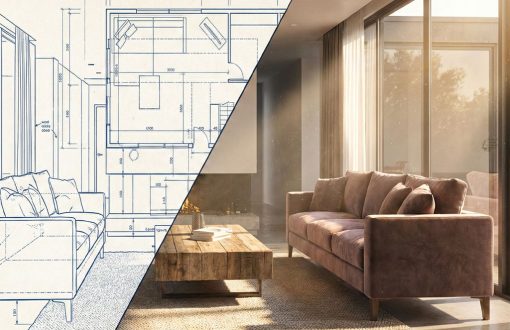What Is 3D Home Design and Why It’s a Game-Changer for Modern House Plans

What Is 3D Home Design and Why It’s a Game-Changer for Modern House Plans
Building a home is one of the biggest investments anyone can make, and getting the design right is crucial. In the past, homeowners relied only on 2D floor plans—lines and measurements on paper that were sometimes hard to visualize. Today, things have changed with the rise of 3D home design. This modern approach enables you to visualize a realistic representation of your dream home before construction even begins.
What Is 3D Home Design?
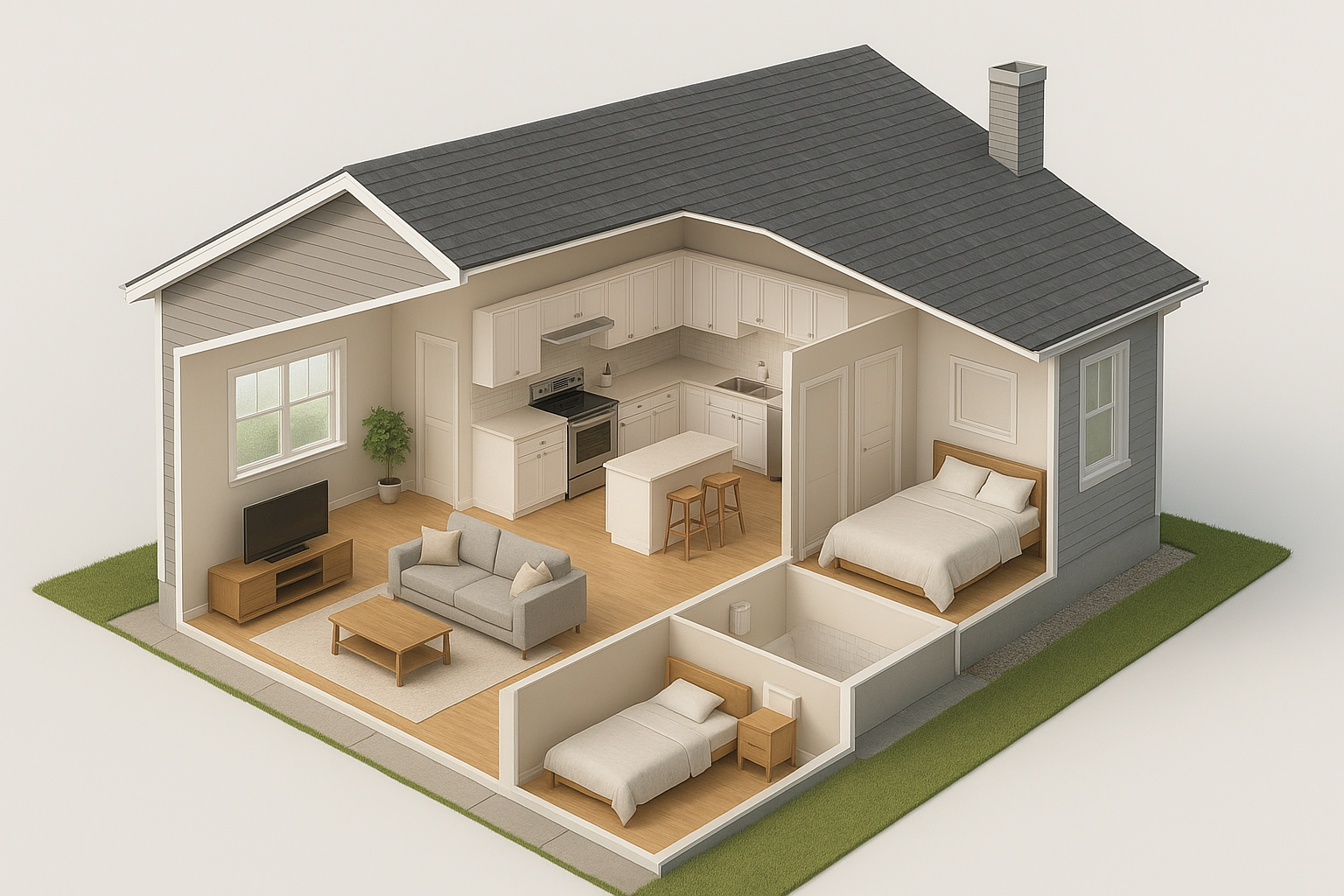 3D home design is the process of creating a three-dimensional digital model of a house plan using computer software. Unlike traditional 2D drawings that show flat layouts with only lines and measurements, 3D home design provides a realistic and interactive representation of a building. It allows homeowners, architects, and builders to view the structure from different angles—inside and outside—just as it would appear in real life. This makes it easier to understand the flow of spaces, proportions of rooms, and the overall look of the home before construction begins.
3D home design is the process of creating a three-dimensional digital model of a house plan using computer software. Unlike traditional 2D drawings that show flat layouts with only lines and measurements, 3D home design provides a realistic and interactive representation of a building. It allows homeowners, architects, and builders to view the structure from different angles—inside and outside—just as it would appear in real life. This makes it easier to understand the flow of spaces, proportions of rooms, and the overall look of the home before construction begins.
One of the biggest advantages of 3D home design is its ability to bring ideas to life visually. Many homeowners struggle to interpret 2D blueprints, often leading to confusion or dissatisfaction once the building is completed. With 3D design, you don’t need technical knowledge to see what your home will look like. You can walk virtually through the living room, kitchen, or bedrooms, experiment with furniture arrangements, and even preview how natural light enters the spaces throughout the day. This makes it a game-changer for decision-making, as you can easily request adjustments before a single brick is laid.
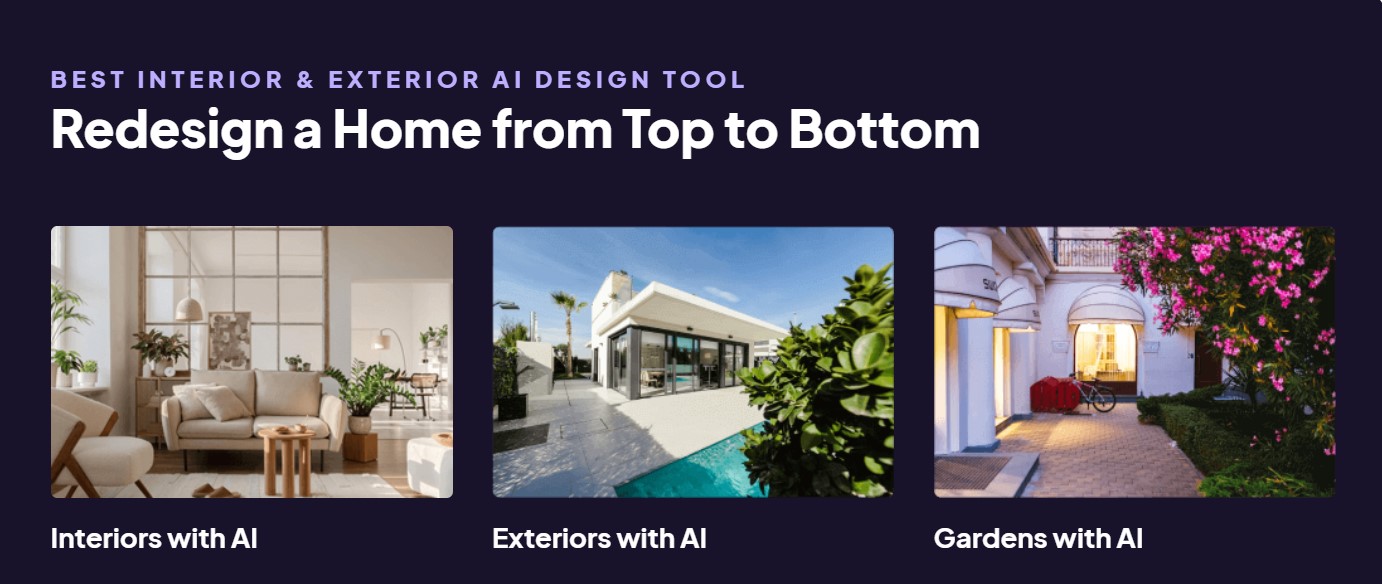 Beyond visualization, 3D home design plays a vital role in improving accuracy and efficiency during the building process. By spotting design flaws, spacing issues, or construction challenges early on, it helps reduce costly mistakes and saves valuable time. Builders and contractors also benefit, as they have a clearer understanding of the homeowner’s vision and can deliver results that match expectations. In short, 3D home design bridges the gap between imagination and reality, offering a smarter, faster, and more reliable way to plan your dream home.
Beyond visualization, 3D home design plays a vital role in improving accuracy and efficiency during the building process. By spotting design flaws, spacing issues, or construction challenges early on, it helps reduce costly mistakes and saves valuable time. Builders and contractors also benefit, as they have a clearer understanding of the homeowner’s vision and can deliver results that match expectations. In short, 3D home design bridges the gap between imagination and reality, offering a smarter, faster, and more reliable way to plan your dream home.
Benefits of 3D Home Design
 One of the most significant benefits of 3D home design is improved visualization. Unlike flat 2D drawings that require imagination to interpret, 3D models give homeowners a realistic preview of what their house will look like once completed. You can see how the living room connects to the kitchen, how wide the corridors feel, and even how your outdoor spaces will blend with the overall structure. This level of clarity reduces guesswork and ensures you are fully satisfied with the design before moving forward.
One of the most significant benefits of 3D home design is improved visualization. Unlike flat 2D drawings that require imagination to interpret, 3D models give homeowners a realistic preview of what their house will look like once completed. You can see how the living room connects to the kitchen, how wide the corridors feel, and even how your outdoor spaces will blend with the overall structure. This level of clarity reduces guesswork and ensures you are fully satisfied with the design before moving forward.
Another major advantage is the ability to identify and fix design flaws early. In traditional planning, errors like misplaced windows, awkward room sizes, or poor ventilation often become visible only during construction, when changes are costly. With 3D home design, such problems can be spotted and corrected digitally. For example, if a bedroom appears too small or a staircase feels cramped, adjustments can be made quickly in the model—saving both money and time during the building process.
3D home design also offers greater flexibility and customization. Homeowners can experiment with different layouts, color schemes, and finishes to see which options suit their lifestyle best. Want a bigger master bedroom or a more open-concept kitchen? Changes can be applied instantly to the 3D model without redrawing the entire plan. This makes it easy to explore multiple design variations until you arrive at a plan that perfectly balances beauty, comfort, and functionality.
Additionally, 3D house plans improve communication between homeowners, architects, and builders. Many times, misunderstandings arise because 2D blueprints are too technical for non-experts to interpret. With a 3D model, everyone—regardless of technical knowledge—can see and agree on the same design. This ensures that the architect’s vision matches the homeowner’s expectations, while the builder clearly understands what needs to be delivered on-site. The result is smoother collaboration and fewer conflicts during construction.
Finally, 3D home design leads to significant cost and time savings. By visualizing the home in detail and resolving potential issues in advance, construction becomes more efficient and less wasteful. Materials are used more effectively, rework is minimized, and projects are completed faster. In many cases, this technology prevents expensive mistakes that could easily add weeks or even months to a building project. For homeowners, that means peace of mind, financial savings, and a smoother journey from concept to reality.
3D Home Design vs. 2D House Plans
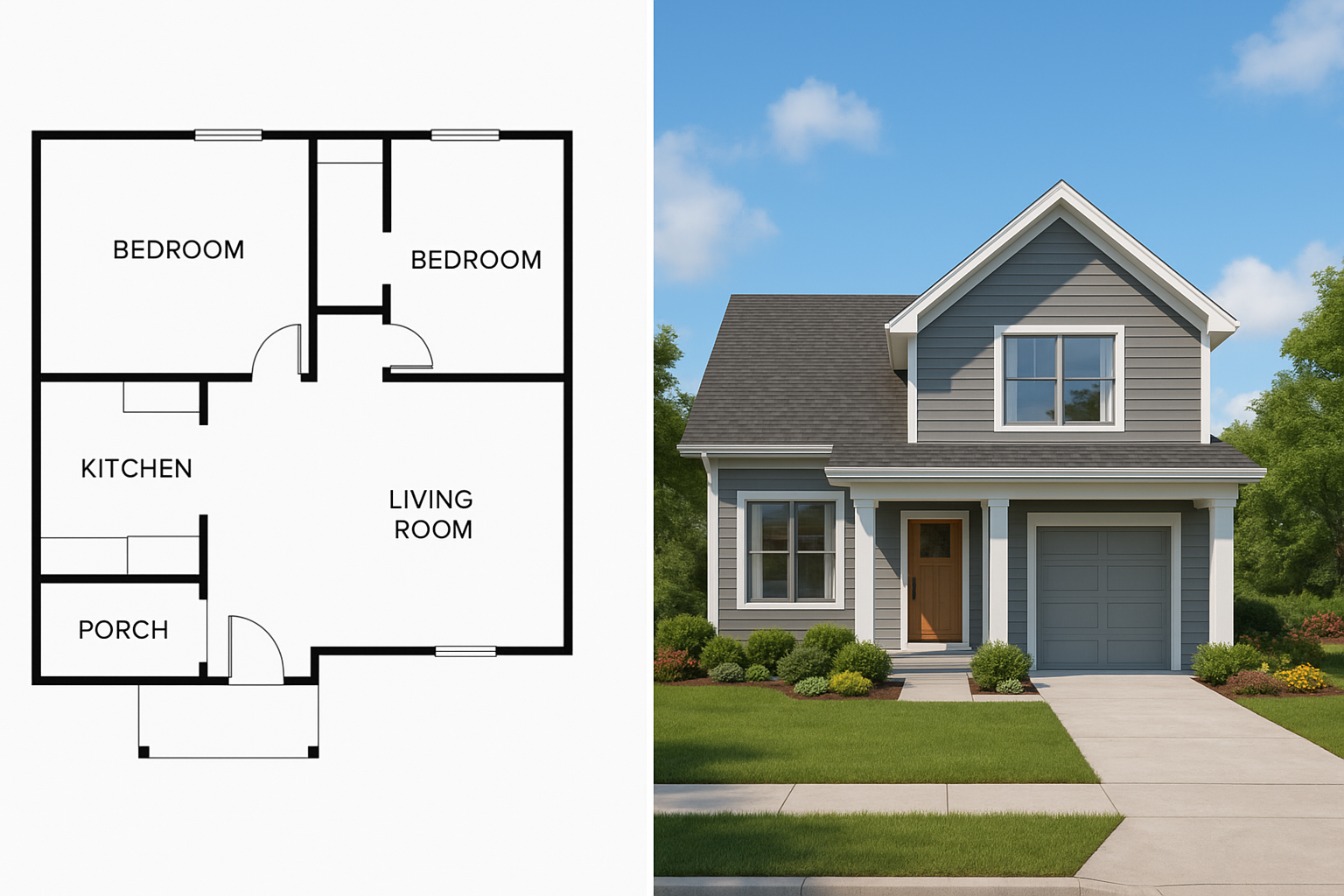 Traditional 2D house plans have long been the foundation of architecture and construction. They present layouts using flat lines, measurements, and symbols, which are useful for builders and engineers but often confusing for homeowners without technical knowledge. While 2D drawings provide accurate dimensions, they do little to help clients visualize how spaces will actually look or feel once built. This limitation sometimes leads to misunderstandings, misaligned expectations, and even costly design changes during construction.
Traditional 2D house plans have long been the foundation of architecture and construction. They present layouts using flat lines, measurements, and symbols, which are useful for builders and engineers but often confusing for homeowners without technical knowledge. While 2D drawings provide accurate dimensions, they do little to help clients visualize how spaces will actually look or feel once built. This limitation sometimes leads to misunderstandings, misaligned expectations, and even costly design changes during construction.
In contrast, 3D home design bridges the gap between technical precision and visual clarity. With 3D models, homeowners can experience their future homes in a lifelike way—walking virtually through rooms, exploring different layouts, and seeing the play of light and space. This not only makes decision-making easier but also ensures greater accuracy, fewer mistakes, and stronger collaboration between architects, builders, and clients. While 2D plans remain essential for technical details, 3D design adds a new dimension of confidence and creativity, making it the smarter choice for modern house planning.
Popular Uses of 3D Home Design
One of the most common uses of 3D home design is in residential house planning. Whether it’s a simple bungalow, a duplex, or a luxury mansion, 3D design makes it easier to visualize the layout, proportions, and overall flow of the home. Homeowners can explore how spaces connect, ensure rooms are the right size, and even test how furniture might fit before construction begins. This gives confidence that the design truly matches lifestyle needs before committing to a final plan.
3D home design is also widely used in renovations and remodeling projects. For homeowners upgrading their kitchens, expanding living spaces, or redesigning interiors, 3D visualization allows them to preview changes before work starts. Instead of relying on imagination, they can see how a new wall, open-plan concept, or added extension will look in reality. This reduces the chances of regret after costly renovations and helps make informed decisions during upgrades.
Another popular application is in interior design and decoration. 3D models allow designers and homeowners to experiment with furniture layouts, lighting, color schemes, and finishes. You can swap tile options, change wall paint, or adjust ceiling designs to see which combination works best. This makes it easier to create stylish, comfortable interiors while avoiding mismatched choices that only become apparent after installation.
Lastly, 3D home design plays a big role in real estate and property marketing. Developers and agents often use 3D models or virtual walkthroughs to showcase properties to potential buyers. Instead of showing flat floor plans, they can present realistic visuals of houses or apartments, making it easier for clients to connect emotionally with the property. This approach not only speeds up sales but also builds trust, as buyers clearly understand what they’re investing in.
Conclusion
 3D home design is more than just a modern tool—it’s a complete game-changer in how we plan, visualize, and build homes today. Unlike traditional 2D drawings that leave room for doubt, 3D design brings clarity, precision, and creativity into the process. From helping homeowners see their dream house in lifelike detail to reducing construction errors and saving costs, the benefits are endless. Whether you’re building from scratch, remodeling, or simply exploring design options, 3D technology ensures you make smarter decisions every step of the way.
3D home design is more than just a modern tool—it’s a complete game-changer in how we plan, visualize, and build homes today. Unlike traditional 2D drawings that leave room for doubt, 3D design brings clarity, precision, and creativity into the process. From helping homeowners see their dream house in lifelike detail to reducing construction errors and saving costs, the benefits are endless. Whether you’re building from scratch, remodeling, or simply exploring design options, 3D technology ensures you make smarter decisions every step of the way.
For homeowners, architects, and builders alike, 3D home design bridges the gap between imagination and reality. It takes your ideas, transforms them into a realistic model, and gives you confidence before construction begins. That’s why it has become the go-to solution for modern house planning across the world.
👉 Ready to bring your dream home to life? Explore our House Plan Collection to discover stunning 3D house plans for bungalows, duplexes, and luxury homes. You can also contact us for a custom 3D home design tailored to your land size, budget, and lifestyle. With the right plan, your dream home is just one step away!


